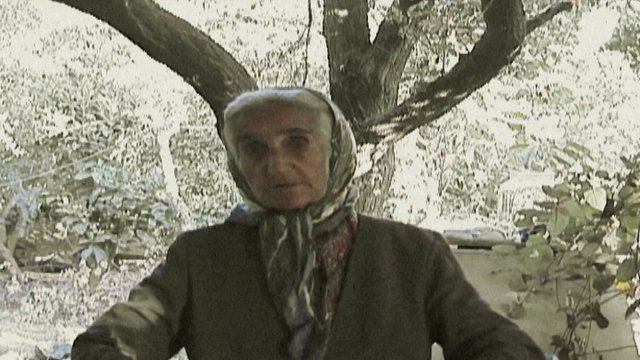
Anjar: Flowers, Goats and Heroes
Where to Watch Anjar: Flowers, Goats and Heroes

Anjar: Flowers, Goats and Heroes is a poignant and intricately crafted film directed by Noura Kevorkian, which was released in 2009. Set against the backdrop of the Lebanese town of Anjar, the film offers a unique blend of personal, cultural, and historical narratives that resonate deeply with viewers. Infused with themes of identity, memory, and resilience, the film is a heartfelt exploration of the human condition set in a post-conflict landscape.
The story unfolds in Anjar, a town that is emblematic of the Lebanese civil war’s aftermath, where the remnants of a once-vibrant community are caught between the echoes of history and the hopes for a brighter future. The narrative introduces audiences to the diverse lives of its characters, each representing different facets of the town's culture and the lingering impacts of conflict on their lives. The central character—a female protagonist—serves as a bridge between the past and the present, navigating her own personal journey while also reflecting the collective trauma of her community.
One of the most remarkable aspects of the film is its nuanced character development. Through careful storytelling, Noura Kevorkian delves into the lives of ordinary people who have become extraordinary by virtue of their experiences. Each character is intricately woven into the fabric of Anjar's story, and the film explores their individual aspirations and struggles while contextualizing them within the broader socio-political landscape. As we follow their journeys, we gain insight into the complexities of life in a community marked by loss and longing.
The visual aesthetics of Anjar play a crucial role in conveying its themes. The cinematography stands out with its vivid portrayals of the natural beauty surrounding Anjar as well as the stark contrast of the town’s architectural ruins. This aesthetic choice serves as a metaphor for the resilience of the people—the flowers symbolize hope and regeneration, while the goats represent the simplicity and endurance of rural life in a region steeped in history. The film beautifully captures the intimate relationship between the inhabitants and their environment, highlighting both hardships and moments of joy.
Throughout the film, the theme of connection—connections to place, to family, to cultural heritage—is beautifully articulated. The communal spirit of Anjar is palpable, and viewers are invited to witness the interactions among family members, neighbors, and friends, which are laced with humor, warmth, and sometimes tension. Even in the midst of conflict, there are moments of shared laughter and tenderness that illuminate the enduring bonds that sustain these characters.
Music and sound are used effectively throughout the film, enhancing the emotional depth of the narrative. Traditional Lebanese music punctuates key moments, evoking a sense of nostalgia and belonging. The score and ambient sounds immerse the audience into the atmosphere of Anjar, allowing them to experience the setting almost as an additional character in the story. The soundtrack serves to augment the emotional landscape, creating a harmonious blend between what is seen and felt.
Anjar also addresses broader themes of migration, displacement, and identity. As characters grapple with their memories and aspirations, they reflect the wider experiences of Lebanese diaspora communities. The film explores how the past impacts the present, and how individuals find their places in a world that often feels fractured. This search for identity amidst chaos resonates universally, making it accessible to audiences from varied backgrounds.
A critical aspect of the film is its focus on women’s experiences within the context of conflict and reconstruction. The female protagonist embodies strength and vulnerability, illustrating the often overlooked narratives of women in the aftermath of war. Her journey is one of empowerment, as she navigates societal expectations and personal desires, challenging norms and asserting her agency. The film thus serves as a celebration of female resilience, providing a voice to those who have historically been marginalized in stories of war and recovery.
In conclusion, Anjar: Flowers, Goats and Heroes is a visually stunning and emotionally rich film that transcends the boundaries of its setting to tell a universally human story. Noura Kevorkian's direction brings to life the complexities of a community in transition, leaving viewers with a lasting impression of the power of remembrance, healing, and hope. The film is an ode to the spirit of survival and the undying connection to one’s roots, making it a significant contribution to contemporary cinema that invites reflection and dialogue. Whether through its characters' struggles or triumphs, Anjar reminds us of the beauty and fragility of life amid the shadows of history.
Anjar: Flowers, Goats and Heroes is a Documentary movie released in 2009. It has a runtime of 86 min. Critics and viewers have rated it moderate reviews, with an IMDb score of 5.7..
How to Watch Anjar: Flowers, Goats and Heroes
Where can I stream Anjar: Flowers, Goats and Heroes movie online? Anjar: Flowers, Goats and Heroes is available to watch and stream, buy on demand, download at Amazon, Amazon, Google Play, YouTube VOD. Some platforms allow you to rent Anjar: Flowers, Goats and Heroes for a limited time or purchase the movie for downloading.
